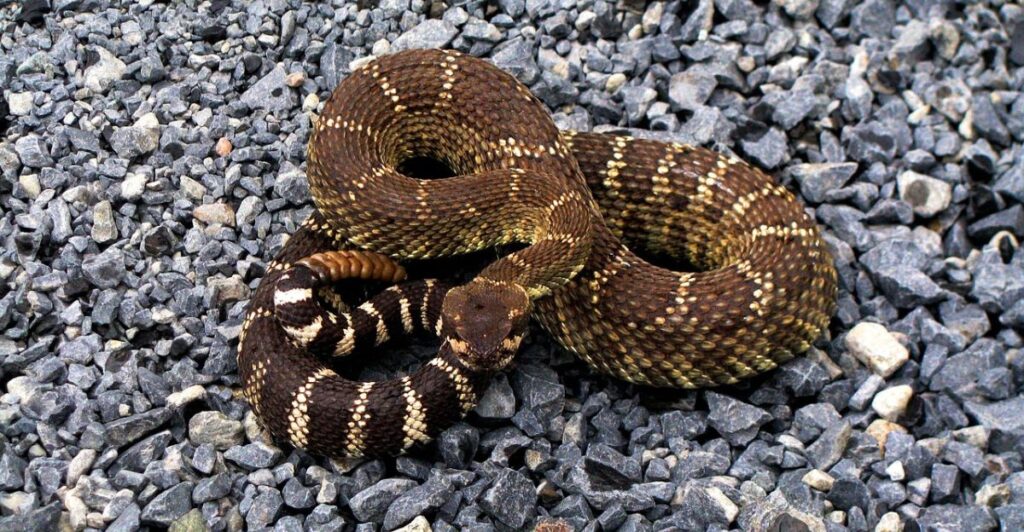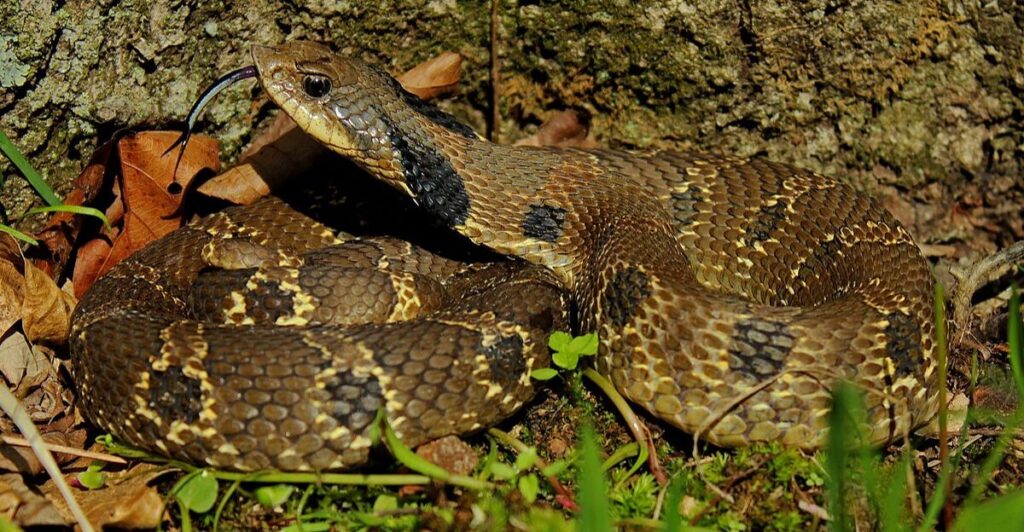
The wildest snakes in the U.S. are found in states with unique ecosystems, ranging from arid deserts to lush forests. These 12 states not only support diverse habitats but also offer opportunities to appreciate the natural beauty and importance of these often misunderstood reptiles.
1. Texas Welcomes the Biggest Snake Variety

Over 115 snake species slither across Texas, more than any other state. The vast deserts host iconic rattlesnakes, while wetlands harbor water snakes. Surprisingly, Texas also houses the rare Indigo Snake, a non-venomous giant that eats rattlers!
2. Florida Is the Perfect Playground for Reptiles

Pythons stretching over 18 feet and weighing more than 200 pounds? That’s Florida! While invasive Burmese Pythons dominate headlines, native species like Eastern Coral Snakes thrive in its subtropical climate. Florida even holds annual “Python Challenges” to control their numbers.
3. Arizona Rattles With the Most Venomous Species

Home to 13 rattlesnake species, Arizona owns its title as rattlesnake capital. One standout is the Mojave Rattlesnake, famed for its neurotoxic venom. Locals celebrate these slithering creatures with events like Rattlesnake Festivals.
4. California Is a Hotspot for Unique Native Snakes

California’s king snakes live up to their name—they’re immune to rattlesnake venom and hunt them down! Spanning deserts, mountains, and valleys, California is home to the Red Racer, a speedy serpent darting through dry terrain. Look fast, or you might miss it.
5. Nevada Snakes Are Masters of Desert Survival

Have you heard of the Sidewinder? This Nevada native rattlesnake glides sideways over desert sand, a unique adaptation for staying cool and quick. Its striking movement and venomous bite make it one of the desert’s most fascinating and feared inhabitants.
6. Louisiana’s Swamps Are a Cottonmouth Paradise

Swamp snakes rule Louisiana’s bayous. The cottonmouth, famous for its white-lined mouth when agitated, lurks silently in murky waters. Legend has it that locals once nicknamed these reptiles “swamp vipers” for their stealthy ambush hunting.
7. New Mexico Offers an Unexpected Snake Treasure Trove

New Mexico may surprise you—it’s not just rattlesnakes here. Species like the strikingly patterned Gray-banded Kingsnake hide among rocky outcrops. Rare and reclusive, it’s a sought-after find for enthusiasts exploring New Mexico’s canyons and deserts.
8. Oklahoma Balances Plains and Forest Snakes

You wouldn’t think Oklahoma is snake-central, but it has an impressive 46 species. Bullsnakes, the largest in the Midwest, mimic rattlesnake sounds by hissing and shaking their tails. Unlike their venomous doppelgangers, they’re harmless.
9. Georgia Snakes Love the Southern Pine Forests

Georgia’s longleaf pine forests hide this elusive reptile gem. Endangered yet iconic, this glossy blue-black serpent grows over eight feet long. Conservation efforts here help protect its dwindling habitat to ensure its survival for generations of nature lovers.
10. Alabama Thrives With Rich Snake Biodiversity

Copperheads, rattlesnakes, and harmless garter snakes thrive in Alabama’s lush forests. A lesser-known species, the Eastern Hognose Snake, takes center stage—it pretends to be lifeless to escape predators. Another interesting resident is the Eastern Coral Snake with bright bands of color.
11. Arkansas Supports Rare and Vibrant Species

Ozark Mountains are a haven for the Speckled Kingsnake, nicknamed the “salt-and-pepper snake” for its striking black-and-white spots. These snakes keep local venomous populations in check, proving nature always finds balance in Arkansas’ fields and riverbanks.
12. Missouri’s Snakes Shine With Clever Tricks

Timber Rattlesnakes may grab Missouri’s spotlight, but the Prairie Kingsnake’s survival tactics are unmatched. When provoked, it mimics rattlesnake behavior and shakes its tail against dry leaves to scare predators. It’s a harmless trickster adapted to Missouri’s grassy settings.
Stay connected with us for more stories like this! Follow us to get the latest updates or hit the Follow button at the top of this article, and let us know what you think by leaving your feedback below. We’d love to hear from you!







